Can a camera lens go bad over a period of time? What is the life of a camera lens? These are the questions that linger in your mind if you have multiple lenses in your kit.
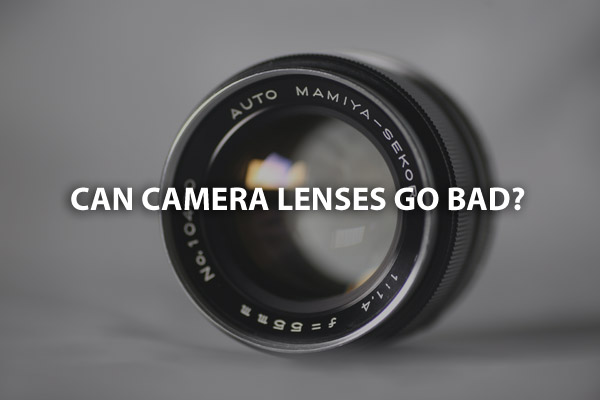
If you are on a budget, you might be looking at buying used camera lenses. In this case you also need to know what you are getting yourself into.
If you are not using the camera lens for a long time, there is a chance that the lens can go bad if you have not stored it properly. If you are using your lens heavily, there is also a chance that the lens can go bad.
There are other factors involved and everything depends on whether or not you follow some rules. You can read this guide to find the answers to all these questions.
How long do camera lenses last?
The life of the lens will mainly depend on its usage. It does not matter whether the lens is a Nikon or Canon, if you use the lens roughly then the lifespan will come down drastically. If you take proper care of the lens, then you can use it for many years without any issues.
Each of the different parts of the camera lens comes with a specific life. For example, the gold-plated contacts at the rear of the camera lens are designed for a specific number of insertions. So, when you attach and detach the lens frequently from the camera body, you are lowering the life of these gold-plated contacts.
Lifespan is also dependent on the quality of the lens. High-end lenses will have a longer life than the cheaper ones. The high-end lenses will make use of top-quality materials for the manufacturing of the lens when compared to the cheaper ones. For example, the high-end camera lenses come with a metallic casing and the cheaper lens comes with a plastic body. So, when you accidentally drop these two camera lenses, then the chances of breaking the lens are more in the case of the plastic one.
Can a camera lens wear out?
A camera lens is made of many many parts. It consists of plastic buttons, metal and plastic casings, different glass elements, electronic boards and components, ribbon cables, metal contact elements. Each of these elements is designed for a particular wear and tear rate.
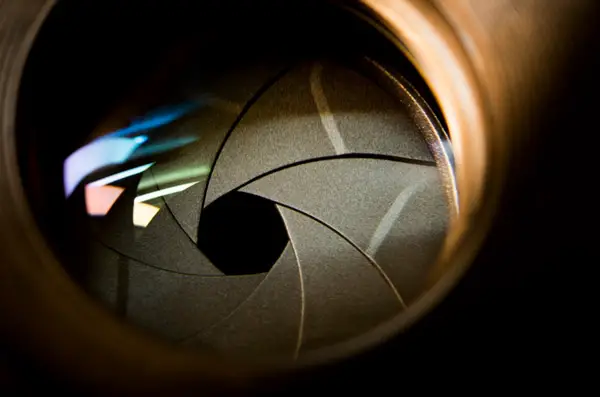
So, when the usage exceeds the design value, then the different components of the camera lens will start to wear out. If you attach the camera lens to the body many times then the gold-plated metal contacts will start to wear out.
When you zoom in and zoom out the lens many times, the glass elements may get dislocated by a small distance over a period of time. There is a chance that the ribbon cable inside the lens may wear out after using the lens for a long time. If you store the camera in a humid area then the life of the rubber parts will come down. So, all the parts of a camera lens can wear out over time.
How do you know if your camera lens is damaged?
There are many indications that will tell you that your camera lens is damaged or worn out.
Scratches in front or back lens glass
A scratch in the front or back glass element of the lens is a clear indication that your camera lens is damaged and needs servicing. Luckily, the rear element is more protected from wear but there are things you can do to protect the front element such as using UV or clear screw on filters.
Worn out/Sticky rubber parts
If you are seeing sticky or worn-out rubber parts then the rubber rings in the lens for zooming and manual focusing are damaged. It can happen when you store the camera in a humid environment or in the sun and heat.
Autofocus not working
If you are not able to focus on the subject, then the autofocus system in the camera lens is damaged. This can happen with use over time. I have had this happen to an expensive 120-300mm f2.8 lens.
Zooming not working
Try zooming the camera lens if your lens is a zoom lens. If you are not able to zoom in or zoom out properly, then the zooming system in your camera lens is damaged. This issue is also referred to as the camera lens retraction issue.
Visible broken parts
The best method to check for damages initially is a visual inspection. You can visually inspect the lens for any cracks on any of the lens parts. The chances of the lens getting physically cracked are more in the case of a plastic lens if you drop it accidentally. Many older metal lenses are built like tanks.
Non-working switches
Different camera lenses will come with a different set of switches. The most commonly seen switches are the auto and manual focus slider switch and the image stabilization slider switch. If you are not able to enable the manual focus or autofocus by sliding the switch in the camera lens, the switch has gone faulty. If you are unable to turn on or turn off the image stabilization, then the image stabilization slider is damaged.
How can I test my camera lens without a camera?
There are some techniques that you can use to test the lens without using the camera.
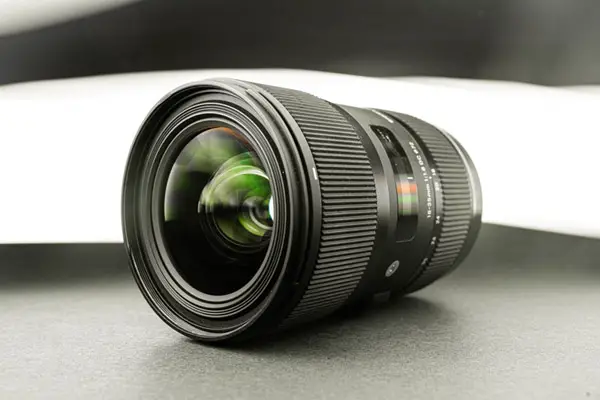
You can inspect the glass elements inside the lens for scratches, fungus, and water droplets.
Remove the rear and front cap of the camera lens. Point the lens towards a slightly brighter white area and see through the different lens elements by altering the angle. Repeat this step for both the rear and front end. If there is any fungus, water droplets, or scratches in the glass, then it will become visible. The lens fungus will be visible in the form of webbing.
You can turn the zoom ring and the focus ring in both directions to ensure that the movement is good without any harsh stoppage. Check for the quality of the rubber rings by visual inspection.
Look at the tripod mount threads that will come with certain telephoto lenses. Make sure that the thread of the tripod mount is not damaged. You can also look at the different screws in the lens to ensure that the lens was not opened before.
You will not be able to test the lens fully without a camera body. A camera body is needed to ensure that the communication between the camera and the lens is working properly through the gold-plated contacts in the lens and the body.
Does the camera lens expire?
The camera lens is designed with parts that come with a particular lifespan. If you take proper care of the camera then you can use it for many years. Humidity can reduce the camera lens life. So, if you live I a humid area, then use a dry cabinet to store your lens. The camera lens does not come with an expiration date. It all depends on use and environment. But, the different parts in the camera come with a life expectancy based on their usage.
Is it good to buy used lenses?
Used camera lenses can be a good option if you don’t have a sufficient budget to invest in a brand new lens. There are many things to check in the used lens before the purchase. These checks will ensure that the condition of the used lens is still good for use.
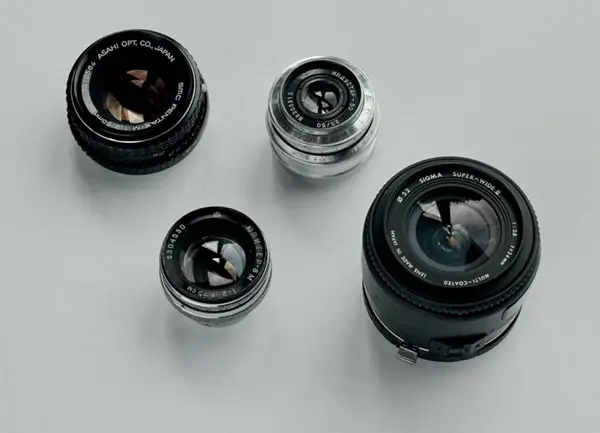
Check for fungus in the inside glass elements
There can be fungus in the inside glass elements of the lens. You need to point the lens to any bright area and see through the lens at different angles. If you see any webbing, then its better not to take the lens. The webbing can cause issues in lens focusing and the final image. So, ensure that there is no fungus in the lens. It is costly to remove the lens fungus from the inside glass elements of a lens. It can affect the coating in the glass elements also.
Lens contacts on the rear
There will be gold-plated lens contacts on the rear side of the lens. These contacts must be in good condition. It is essential for the proper communication between the lens and the camera body. If there are any visible color changes, dents, or scratches in the contacts, then better avoid such lenses. Otherwise, you will need to get the contacts replaced later.
Check with a camera body
It is a good idea to carry a camera body when you go inspecting a used lens. If you don’t have a camera body, then you can request the seller to provide a body for checking. Attach the lens to the camera body multiple times to ensure that you are not getting any kind of error messages.
You can start capturing some photos to confirm that the autofocusing is working properly. It will indicate that the lens contacts are working properly. Never buy a used lens before testing it with a compatible camera body.
Check the function of the manual focus ring
Switch off the autofocus in the camera and enable the manual focus. Turn the focus ring in the lens to different directions and point at different subjects. This is to ensure that the manual focus feature of the lens is working properly. The focus ring must move freely without any obstructions.
Check the camera lens thread
The lens thread of the camera must be intact. There should not be any wear and tear in the thread. If there are any dents or tears, then you may find it difficult to attach the lens to the camera body and things will only get worse.
Check all the buttons in the lens
There will be different buttons in the lens like AF/MF, IS ON/OFF, etc. The number of buttons will vary for different lenses. Ensure that all the buttons are working properly.
Check the lens hood and its thread
All the camera lenses will have a thread in the front to connect the lens hood. If the lens comes with a hood, then you must try connecting it to the lens. It must fit properly in the thread. If it is loose, then there is a chance of the hood falling during the shooting.
Check the filter threads
It is essential to check the filter thread. You can ask the seller for a filter to check the filter thread. You must be able to screw in the filter easily onto the lens thread. The threads cannot be bent.
Check the zoom ring
If the lens you are going to buy is a zoom lens, then you must test the zoom ring also. Check to ensure that it is zooming in and zooming out properly. Some lenses, especially older ones have push and pull zooms and these can get loose with time and use.
Scratches and dents on the lens
Look for scratches and dents on the lens body as well as on the front and back glasses. If there are heavy dents in the lens, then it indicates that the lens has fallen somewhere or been used roughly. It can affect the alignment of the different glass elements inside the lens. So, avoid purchasing such used lenses.
Ask for the receipt
You must ask for the purchase receipt of the lens, even if the lens is out of warranty period. It will ensure that you are not buying a stolen lens. It will also help you to know the actual age of the lens. The price of the used lens will depend on its age. So, seeing a receipt will help you determine the right price for the lens.
Discontinued lenses
If you are planning to purchase a lens that is discontinued by the seller, then I strongly recommend not investing in such a lens. It is because if any of the parts of the lens go bad in the future, you may find it tough to get them replaced. The manufacturer may not be supplying the spare parts anymore.
Check the rubber parts
There will be rubber parts outside the lens in the zoom and focus rings. Check the state of these rubber parts. These parts may start to wear out over a period of time. So, ensure that they are in good condition.
Yellowing of glass elements
If the lens is a very old one, then there is a chance for the yellowing of the lens glass elements. This yellowing happens due to the presence of the radioactive substance thorium in the glass. So, take a picture using the lens and check the image in the viewfinder. You can also transfer the image to your computer and check for any yellow shades. Make sure that you have captured the image in daylight white balance.
Here’s what professional photographer Karl Taylor has to say about buying used camera lenses:
How to store your camera lens properly?
It is essential to store your camera lens properly when you are not using it.
The camera and humidity do not go well together. If you are living in an area with high humidity, then you can consider investing in a dry cabinet for storing your camera lenses. They are available in different capacities. You can invest in any according to the number of lenses that you own.
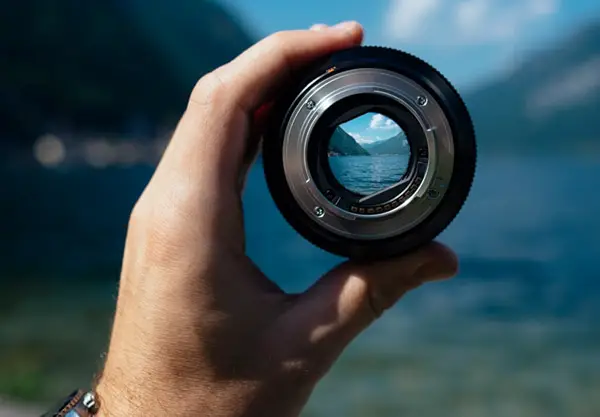
Dry cabinets will help to maintain the temperature and humidity inside. So, you can store your camera lens in the right environment that will help to enhance the life of the camera lens. You can also go for a DIY dry cabinet if you don’t have enough budget for a good dry cabinet.
If you are not living in a humid area, then you can keep the camera lens in your camera bag on your shelf or cupboard. You can place few silica gel packets inside the camera bag. These silica gel packets will help to absorb any additional moisture present in the camera bag. You must replace the silica gel packets at least once every six months.
It is a good practice to clean the camera lens every time after an outdoor shoot.
What needs to be done when the camera lens goes bad?
If you find that your camera has gone bad or is not working, you can try to locate the fault in the camera.
If you are having issues with the auto-focusing of the lens, then try focusing the lens with another camera body. If the issue is still there, then try calibrating the focus by referring to the camera manual. If the calibration process is not able to solve the issue, then you must give your camera to the authorized service center for further diagnosis and repair.
If you find any of the glass elements broken inside, then you can hand the lens to the service center to fix the issue.
If you are seeing a lens fungus issue, then you need to give the camera lens to the service center for cleaning the fungus. Don’t try to disassemble the lens by yourself for cleaning the fungus. Some of the glass elements inside the lens come with a special coating to avoid the reflection and diffraction phenomenon. So, if you handle the glass elements with your bare hands, then you will end up destroying the coating.
If any of the buttons in the lens are not working or if the aperture in the lens is not changing, then you need to give the camera to the service center for repair.
Conclusion
I hope that this article has given you a lot of useful information on protecting your lenses and making them last longer, as well as buying used lenses and things to look out for in terms of wear and age. If treated properly, lenses can last and be useful for a very long time. Just look at all the Nikon lenses from the 1980s and 1970s people are still using today.
You can click on the following link to learn how to clean camera lenses properly.









3 comments